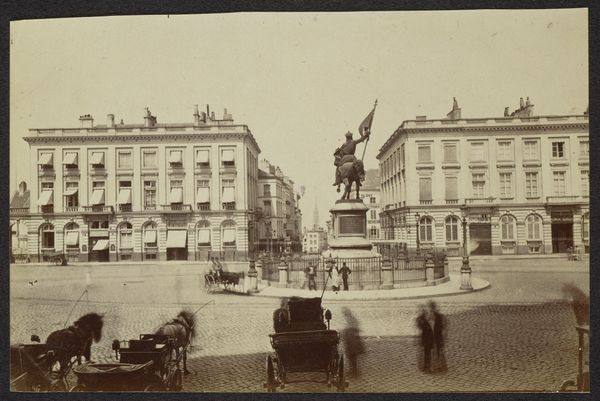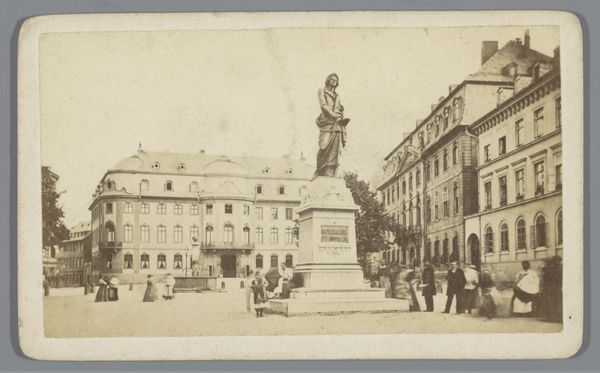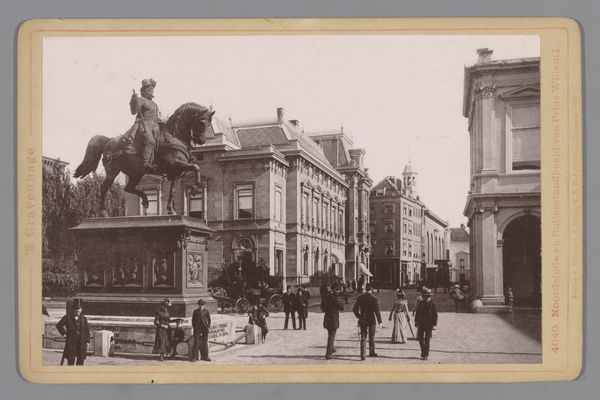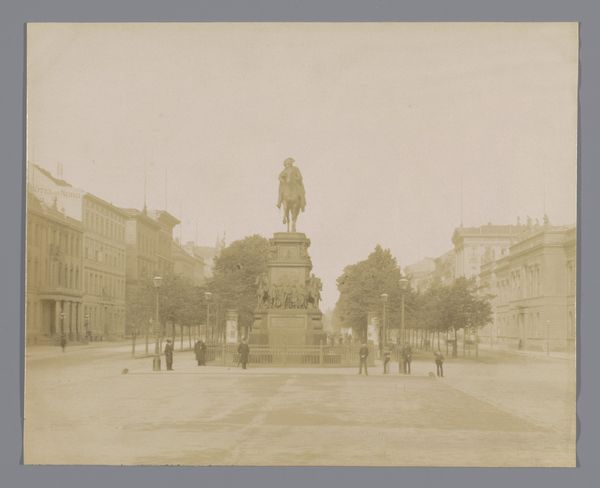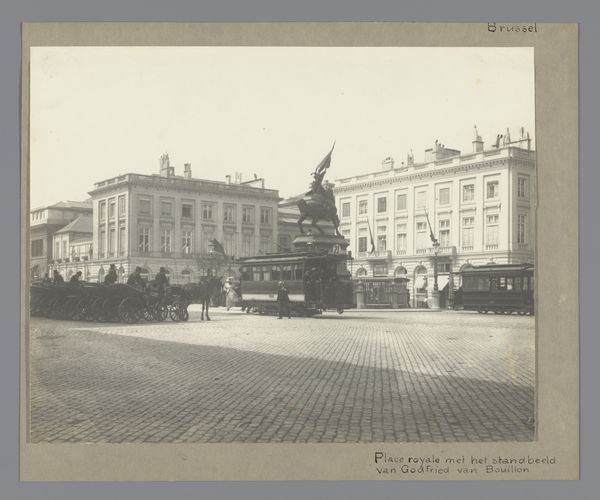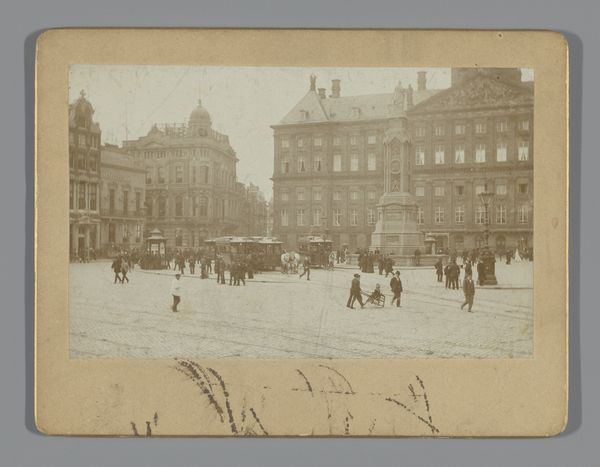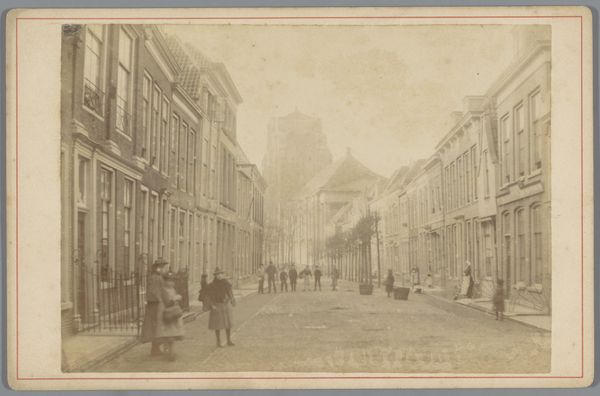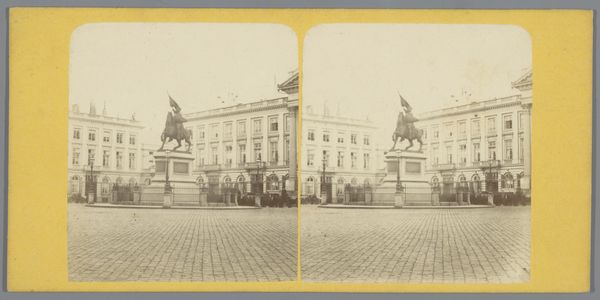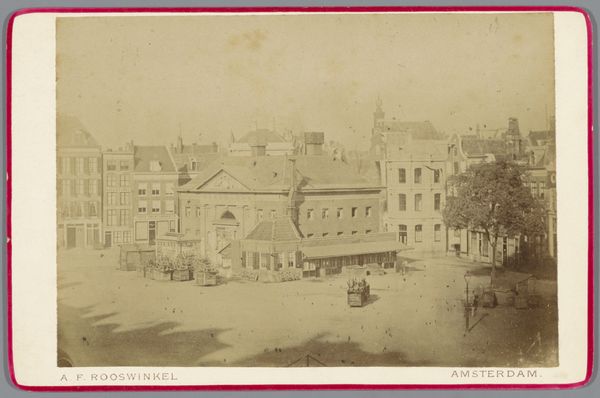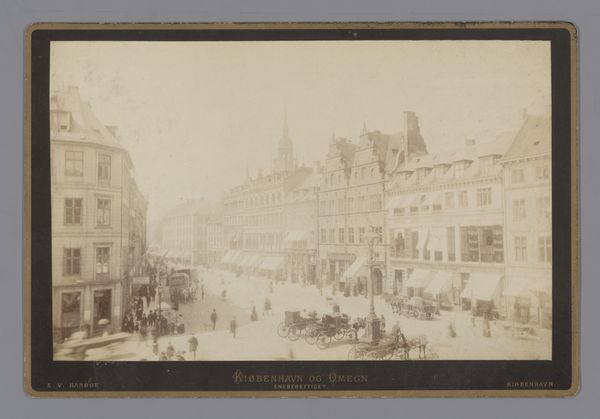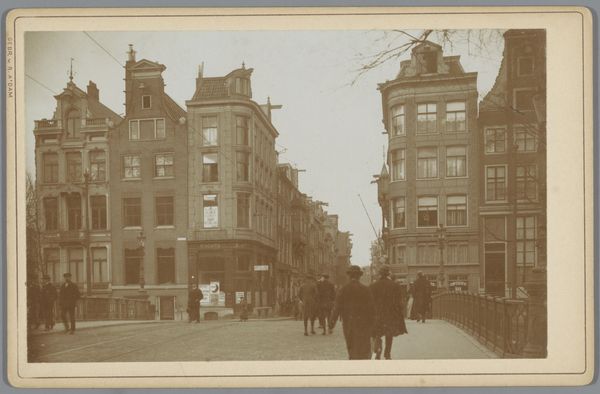
Dimensions: height 108 mm, width 164 mm
Copyright: Rijks Museum: Open Domain
Editor: This is Étienne Neurdein’s “Koningsplein in Brussel,” dating roughly between 1850 and 1900. It’s an albumen print, giving it that characteristic sepia tone. It has a lovely, almost dreamlike quality; I love how the people seem to fade into the scene! What grabs your attention when you look at this piece? Curator: You know, that ghostly presence is exactly what I find so enchanting too. The long exposure, capturing just fleeting impressions of figures – it speaks volumes about the transient nature of life, doesn’t it? Neurdein's work here almost transcends photography; it borders on painting with light and time. What do you make of the deliberate choice of perspective, framing the equestrian statue between those rather imposing buildings? Editor: It’s interesting you point that out; at first glance, it feels very balanced, almost staged. It’s like the buildings are guardians of this history represented by the statue! But is that sense of balance maybe *too* perfect? Curator: Precisely! And that tension, that very "stage-managed" quality as you put it, elevates it beyond a simple document of a place. Don’t you think it encourages us to consider what aspects of reality Neurdein chooses to reveal or perhaps even subtly invent? Consider the light… Where do you feel he's focusing our attention and why? Editor: I think the way the sunlight hits the statue definitely draws your eye; it almost heroizes it. Maybe he's trying to highlight a specific version of Brussels' history. That makes me think differently about what I’m seeing. Curator: And there you have it – art opening doors! Seeing beyond the literal representation to the underlying narrative and choices...that's where the real magic begins. Editor: Definitely something to ponder – it’s amazing how much can be packed into a seemingly simple image. I’ll certainly look at photographs in a new light now.
Comments
No comments
Be the first to comment and join the conversation on the ultimate creative platform.
